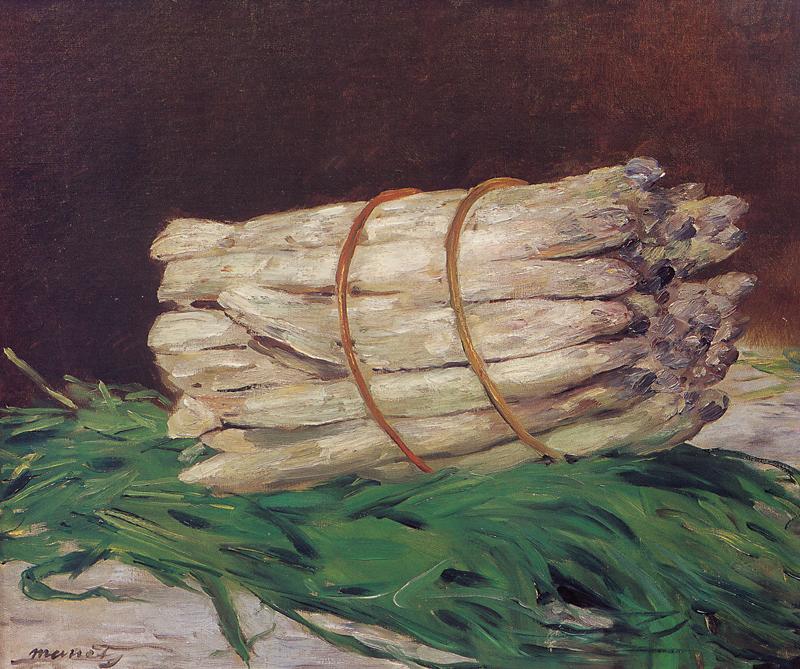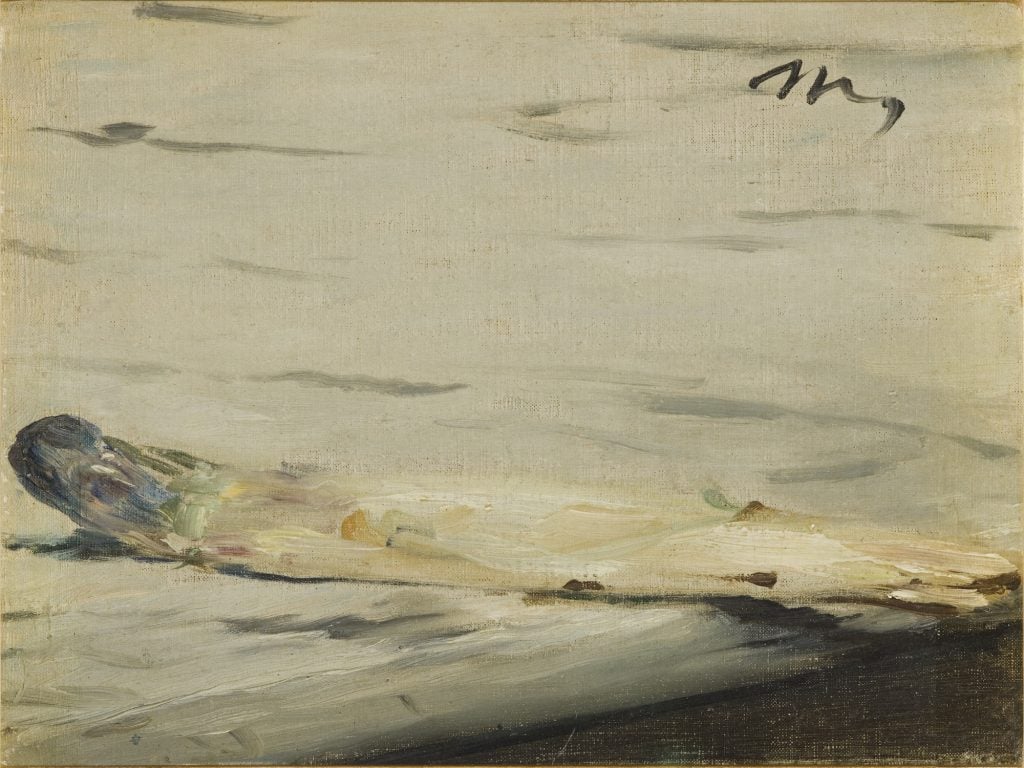Art World
Art Bites: Manet Made a Delightful Artistic Joke With a Single Asparagus Spear
The Impressionist responded to a collector’s generous gesture with one of his own.

The Impressionist painter Édouard Manet was described by his friends as witty and bold, and the story of an 1880 canvas of his, one that measures not even 9 inches across, conveys that wit in delightful manner.
In the last decade of his life (he lived from 1832 to 1883), the Impressionist would send paintings of flowers and fruit to his friends, including apples to his muse Méry Laurent and violets to fellow Impressionst Berthe Morisot. The critic and collector Charles Ephrussi, one of the Parisians who provided the inspiration for Marcel Proust’s character Swann in his classic novel In Search of Lost Time (1913), commissioned the still life Bunch of Asparagus (1880) from Manet for 800 francs. Ephrussi had begun to patronize the Impressionists in 1880, collecting works by figures such as Edgar Degas, Claude Monet, Camille Pissarro, and Pierre-Auguste Renoir.
While many collectors request discounts when they buy artworks, Ephrussi was so happy when he received the 22-inch-wide painting that he actually tipped the artist 25 percent, sending him 1,000 francs.

Edouard Manet, L’asperge (1880). Collection Musée d’Orsay. Donation Sam Salz, 1959. © photo : Musée d’Orsay, Dist. RMN-Grand Palais / Patrice Schmidt
What was the Impressionist to do by way of reply to this generous gesture? Known for his astute and inventive sense of humour, the artist responded with a magnanimous flourish of his own, sending Ephrussi a smaller painting of a single stalk of the spring vegetable, along with a note that read, “There was one missing from your bunch.”
While the paintings began their lives together in Ephrussi’s collection, they are now separated by about 300 miles, so an art lover would have to drive about five and a half hours if they wanted to view these two canvases in immediate succession. The original canvas resides at the Wallraf-Richartz-Museum & Fondation Corboud, in Cologne, Germany, while the smaller one is in the collection of the Musée d’Orsay, in Paris, France.





